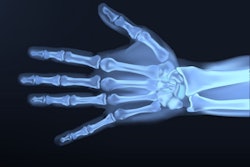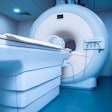
With future capital projects, managers need to consider both the physical components of a piece of equipment and its big-picture integration for efficient patient care, staffing, and throughput, according to an August 2 talk at the 2021 AHRA meeting.
 Tobias Gilk.
Tobias Gilk.In other words, form and function need to meet, with the patient at the center of the model, said presenter Tobias Gilk, senior vice president of Radiology-Planning, founder of Gilk Radiology Consultants, and an MRI safety advocate.
"A 'grocery list' approach is the most elemental way to go about it, but there's a big disconnect there because that's not how it works," Gilk said. "It excludes function, and they need to work together,"
Gilk and colleagues at Rad-Planning don't just speak from experience; they literally wrote the book on the subject: the 2020 U.S. Department of Veteran Affairs Imaging Services Design Guide, which was last updated in 2008. The new guide replaces three prior design guides for radiology, nuclear medicine, and MRI.
To describe the concept at the core of the guide, Gilk suggested thinking of the components of a capital project as computer hardware and software, wherein the hardware represents the machines and facilities and the software signifies the integration of patient care.
"A building is just a building until it's used for a purpose," he said.
As far as details go, Gilk highlighted one that should be music to the ears of managers on a tight budget: It's free. The document can be downloaded by anyone on the Veterans Affairs' (VA) website and contains information on utilization and throughput metrics by modality, facility planning, department layout, modality and suite planning, and all-important future adaptability.
"These ideas can be cut and pasted into a blueprint design for a new or upgraded facility," Gilk suggested.
Additionally, the guide is vendor neutral.
The cost of radiology facility setup is second to that of operating rooms, so vendors tend to showcase their products in designs using the smallest functioning square footage as possible. This might suggest cost savings, but it doesn't make allowances for the addition of other services (e.g., image-guided biopsies), emergency power components, or even in some cases room to wheel in an anesthesia machine. The guide covers design requirements for up to 90% of imaging modalities, Gilk said.
Finally, the guide accounts for future expansions. Gilk suggested that when starting a capital project, managers should sit down with staff and imagine they've won the lottery. Create a model based on an ideal facility and then look at the budget. In this way, you can map out a master plan.
Conversely, planning a capital project based solely on the budget currently available can lead to "Frankenstein facilities" with attached "barnacles," whereby additions are tacked on based on what funds become available, Gilk said.
"Even if it isn't what you need right now, if you leave placeholders in the blueprint, you're planning for future flexibility," he said.
In short, the guide includes planning criteria that reflect technical, operational, and clinical changes that have occurred over the past 12 years. The 600-page document includes guiding narratives, diagrams, drawings, engineering criteria, and the specific fixtures and equipment associated with dozens of imaging rooms.
"There's no such thing as a Swiss Army knife when it comes to the design and planning for a new facility," Gilk noted.
But there is a guide, and if you're about to begin a capital project, start first by downloading it on the VA's website, he concluded.



















